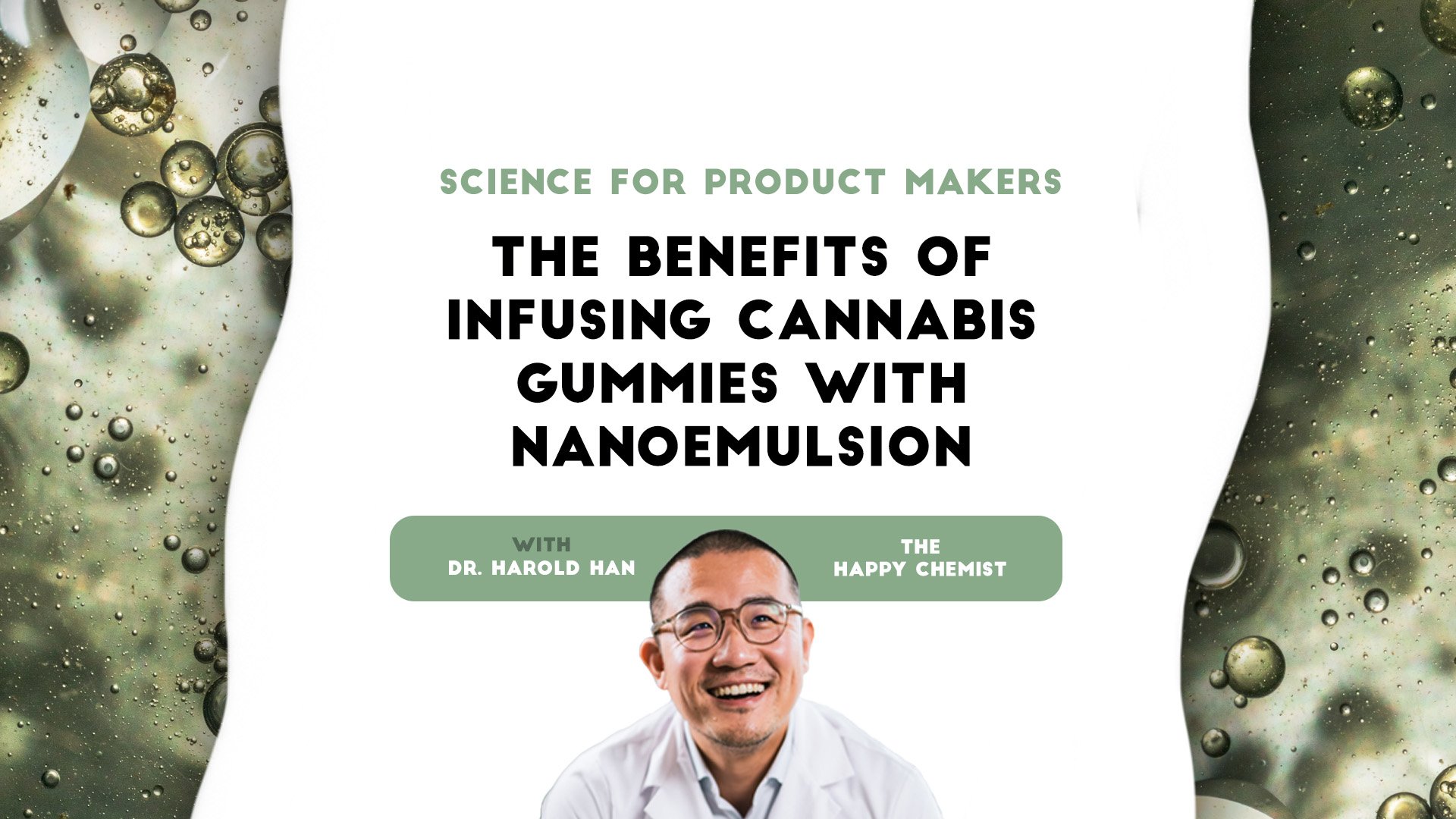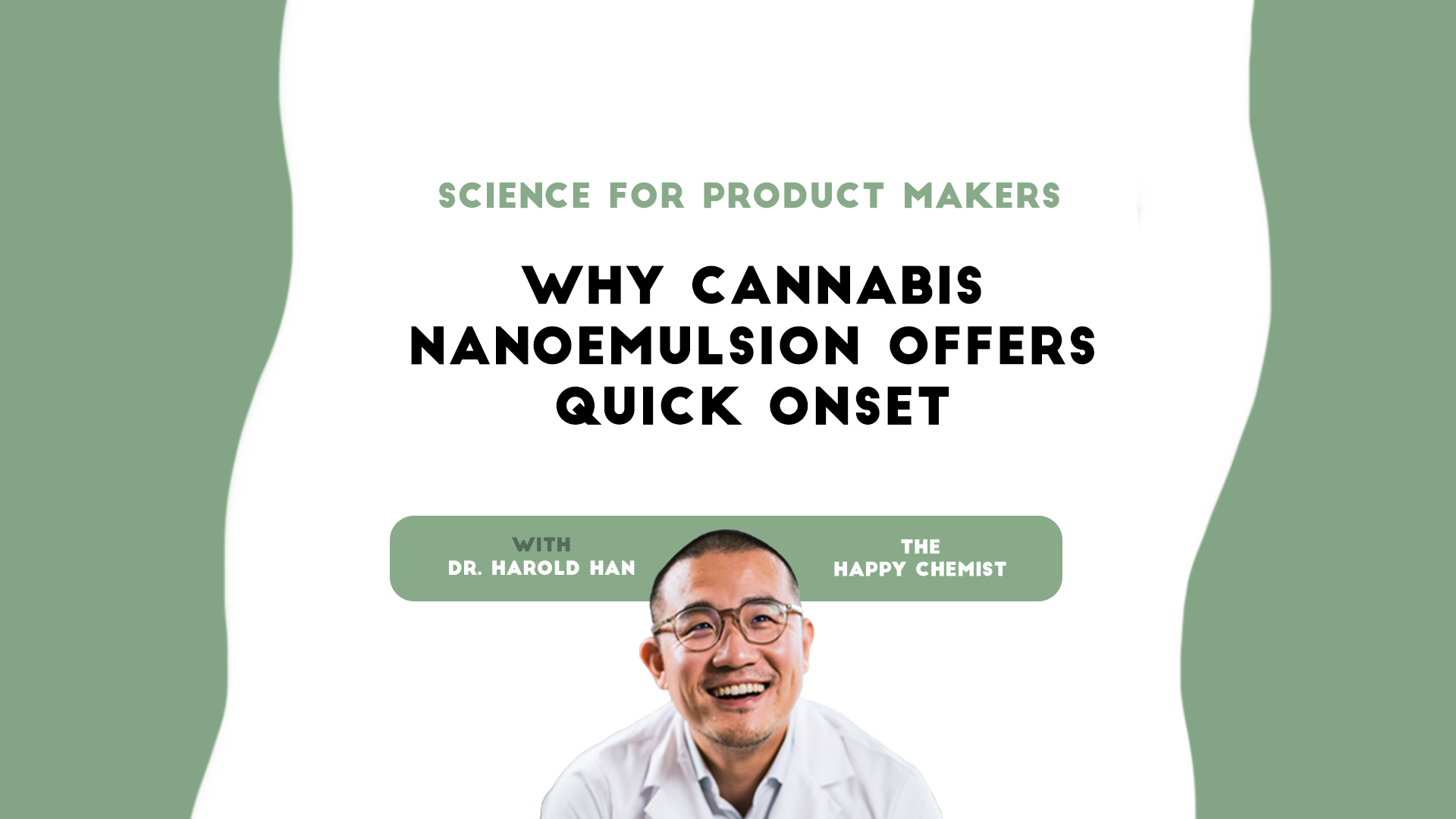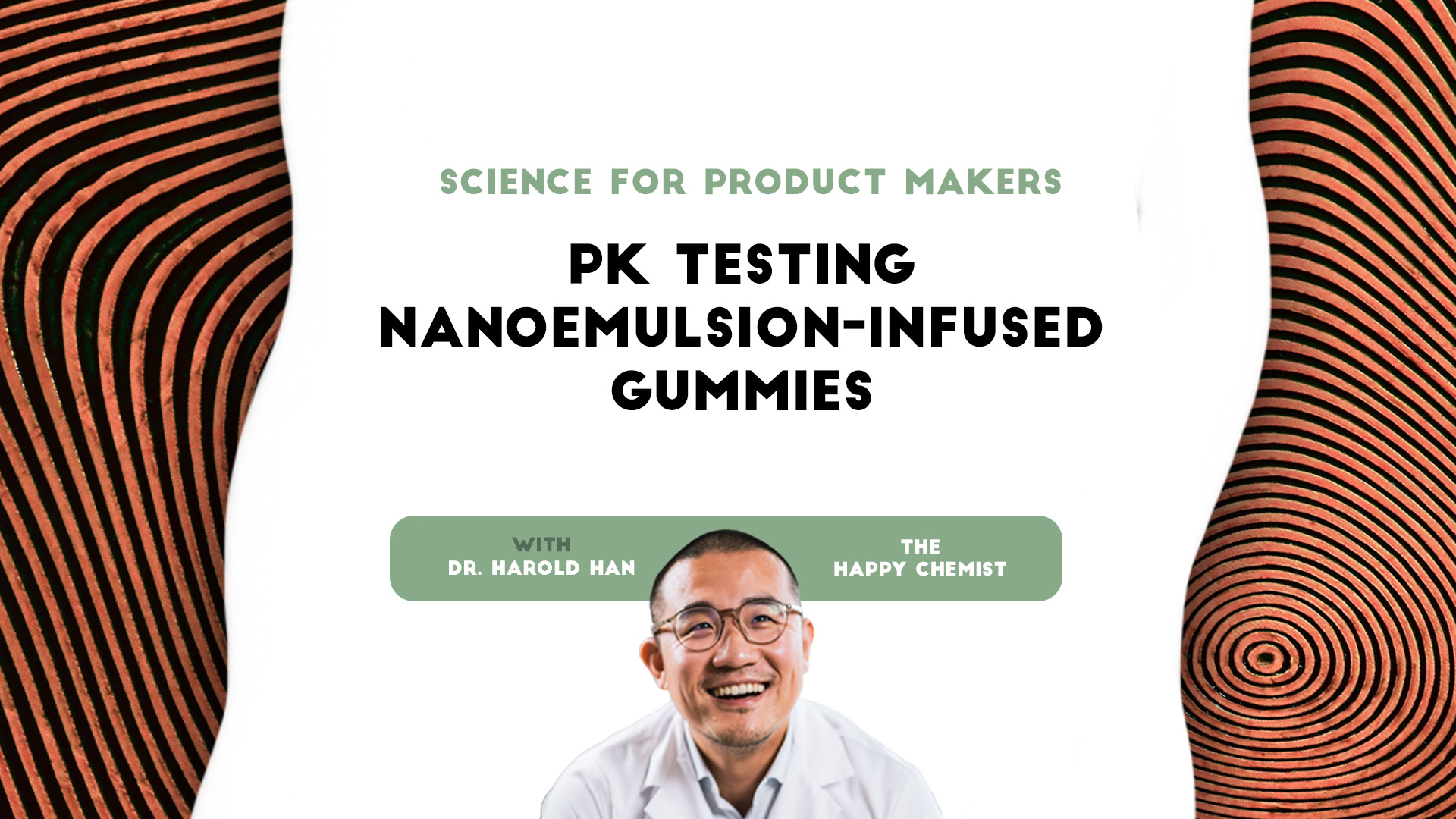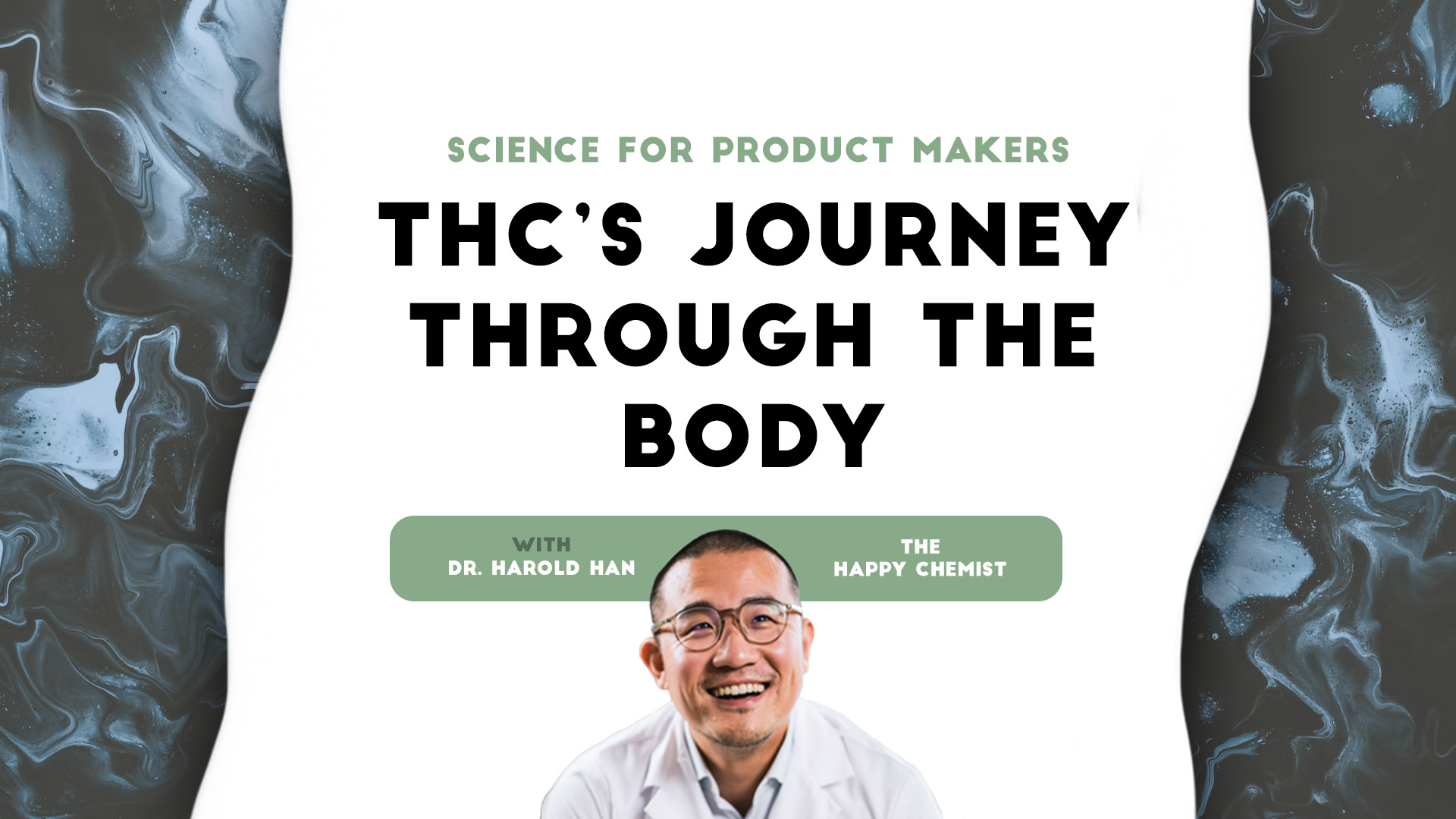Science for product makers: Why cannabis nanoemulsion offers quick onset
This post is also published as an article on Harold's LinkedIn profile. You can read and leave comments here. Our industry generally agrees that...
3 min read
 Dr. Harold Han - "The Happy Chemist"
:
6/29/24 9:19 PM
Dr. Harold Han - "The Happy Chemist"
:
6/29/24 9:19 PM

This post is also published as an article on Harold's LinkedIn profile. You can read and leave comments here.
Today, the majority of cannabis gummies are infused by distillate or isolate. This conventional method is popular thanks to its low flavor impact and straightforward production, allowing brands to easily bring a variety of SKUs to market.
However, one feature associated with distillate infused gummy — slow onset — is the Achilles Heel of this product category. The initial psychoactive effect doesn’t usually occur for 45 - 60 mins, followed by a prolonged duration of peak intensity. Experienced consumers usually need to take the product ~1 hour before they want the effect to start. Worse still, inexperienced consumers may over-consume before they feel any effects, which leads to many unpleasant and uncomfortable stories.
Imagine a cannabis gummy that starts working within 5-10 minutes and reaches its full psychoactive effect within 30. Medical patients, especially, would benefit from faster relief. Would fast onset, then, be the new standard for all future edibles? This is where innovative infusion methods, such as nanoemulsion, come in.

Before we dive into the methods, we need to align on what determines onset. In my prior post, we discussed a hydrophobic molecule like THC would first need to be transferred from the infused product into mixed micelle in order to be absorbed in the small intestine. The quicker THC transfers into mixed micelle, the quicker the absorption and the quicker the onset. Because distillate droplets are so large, it usually takes a long time to be transferred into mixed micelle, resulting in slow onset times.
Nanoemulsion, on the other hand, is able to deliver much smaller THC droplets into gummies. The small droplet size allows THC to transfer into mixed micelle much quicker resulting in faster onset. Keep an eye out for my next post, where I'll expand on Vertosa's human PK study comparing nanoemulsion infused gummy vs distillate infused gummy!
Infusing gummies using nanoemulsion not only enables faster onset times, but also a whole slate of other benefits.
Gummy bases usually consist of hydrophilic ingredients such as water and sugar with pectin or gelatin, so it takes a lot of agitation to mix hydrophobic inputs such as THC because the two phases do not mix naturally. Usually, distillate is added at the beginning of a long and vigorous mixing process. Nanoemulsion, on the other hand, is water compatible and thus can be mixed into gummy bases with gentle agitation. This not only shortens the agitation period to simplify the overall production process, but it also reduces potential potency loss due to oxidation under high heat.
Even with prolonged agitation, it can still be challenging to ensure all distillate can be distributed evenly within all gummies without developing hotspots, or irregular aggregation of the distillate within the gummy. These hotspots lead to potency variation.

Above: A distillate-infused gummy usually contains larger chunks of distillate aggregate (hotspots) while a nanoemulsion-infused gummy distributes the THC homogeneously because the input has already been broken down into tiny droplets.
Product consistency is very important to consumers. If we test each individual distillate-infused gummy, we may see a potency zig-zag as shown below. However, if we test individual nanoemulsion-infused gummies, the potency trend line we would see would be much smoother, centering around the target line.

Extensive agitation is needed to allow distillate to distribute well within a gummy base. Manual mixing at smaller scale may be sufficient to reach target potency. However, when scaling up gummy production with larger automatic equipment, the requirement for mixing is much higher, and it can sometimes be challenging to reach target potency.
Nanoemulsions, on the other hand, are water compatible and can more easily combine with gummy bases, making it an ideal infusion method when scaling up your gummy production process.
Infusing gummies using nanoemulsion has a lot of benefits:
At the same time, some production adjustments are needed to accommodate its usage. Compared to distillate, nanoemulsion has water content and, when added at the end of gummy production, may cause Brix to decrease. This means that the gummy's sugar has been diluted. To combat that, excess water should be cooked off after adding nanoemulsion. The operator can monitor the Brix increase or just monitor the total gummy base weight loss. This is a minor adjustment to make and, in my opinion, a worthwhile tradeoff for a better, easier-to-produce product!
Dr. Harold Han — the “Happy Chemist” — combines his storied background in emulsion chemistry and science with curiosity and fascination in the rapidly growing cannabis industry. Developing nano and micro emulsions his entire career, Harold holds a Ph.D in Surface Chemistry from NYU and is the holder of multiple patents for his inventions in emulsion chemistry.
As the Chief Science Officer at Vertosa, Harold spearheads the company’s development of industry-leading and customized active ingredients for infused product makers, offering pre-suspended aqueous solutions to create incredibly homogenous and stable products while maximizing bioavailability, clarity, and taste.
To learn more about the science of cannabis, make sure to follow Harold on LinkedIn and check out his Happy Chemist videos.

This post is also published as an article on Harold's LinkedIn profile. You can read and leave comments here. Our industry generally agrees that...

2 min read
My last article discussed the advantages of using nanoemulsion in gummies. Many people voted for "quick onset" as their most desired feature, which...

This post is also published as an article on Harold's LinkedIn profile. You can read and leave comments here.